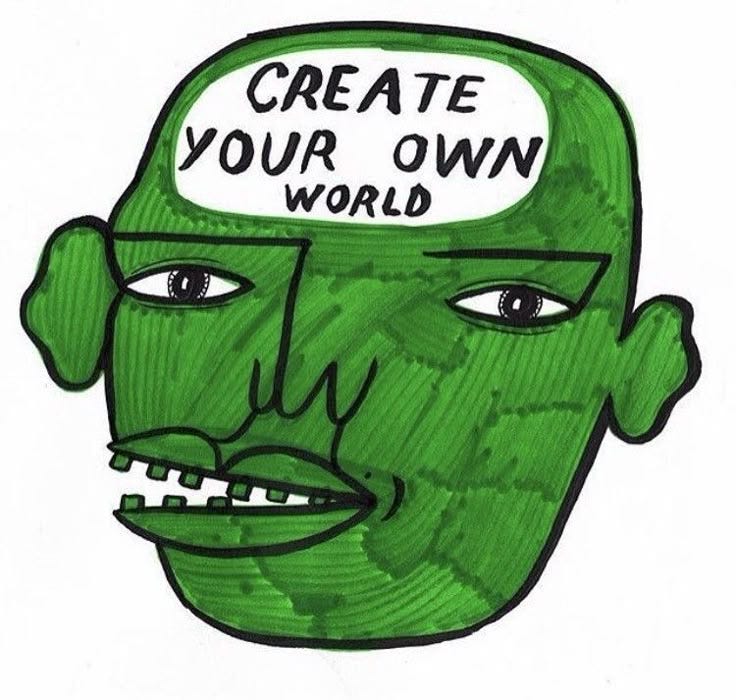Designing Emotion: A Biological Guide
What if emotion isn’t something soft, vague, or irrational — but a form of biological intelligence?
For my 11th birthday, I got the Spiderman game for Nintendo DS. I loved that game, and it went with me everywhere for the months that followed. One of the core mechanisms for navigating the game world as the protagonist was use of “Spidey Senses”, a visible halo or aura that would appear when Spiderman sensed danger nearby.
The appearance of the aura was a signal to become wise to your surroundings and spring into appropriate action. And when you think about it, are emotions so different? Just like the Spidey Senses that alerted me to a villain in my proximity, emotions are simply signals.
For years, we’ve treated emotion as an afterthought in health. Something to manage, suppress, or explain away. But the science tells a different story: emotion is physiological. It’s constructed. It’s measurable. And, most importantly, it’s malleable.
That changes everything. Because if emotion is something the brain constructs from internal signals and environmental cues, then it’s something we can design for. And that’s where creative health comes in.
🧠 Emotion isn’t just in your head
Let’s start with the basics: emotions aren’t fixed. They’re not hardwired reactions that just “happen” to us. According to neuroscientist Lisa Feldman Barrett, emotions are built, not found.
Her theory, known as the Theory of Constructed Emotion, tells a different story:
Your brain doesn’t just react to the world — it predicts. It uses past experience, cultural cues, and real-time signals from your body (like heart rate, gut activity, and temperature) to guess what’s happening — then it labels that guess as an emotion.
In other words, emotions aren’t universal truths. They’re interpretations of signals. Which means they’re flexible.
🫀 Emotion is physical
If emotion is constructed, the raw materials are physiological. You feel emotions in your chest, your stomach, your skin — long before your brain puts a name to them.
In a now-famous study, researchers Nummenmaa et al. (2014) asked participants to map where they feel different emotions in the body. The results were remarkably consistent:
Anger surged through the chest and arms.
Sadness dimmed the limbs.
Happiness lit up the whole body.
This tracks with what we already know from Antonio Damasio’s work: bodily signals — heart rate, breath, posture — don’t just follow emotions. They also help generate them. It’s not mind vs. body, it’s all one feedback loop, and age-old practices like breathwork can attest to that.
So what does this have to do with creative health?
Stay with me now! If emotion is a combination of internal signals + external context + prior experience, then altering the context — or changing how you respond to those signals — reshapes the emotional outcome. That’s exactly what creative health does.
Creative experiences offer new sensory input. They break the loop of everyday life, slow the breath, shift your posture, and create space for reflection or release. Whether it’s through painting, music, virtual reality, or mindful movement, creative practice helps rewire the way your brain interprets internal sensations. It’s not distraction. It’s a recalibration of sorts.
Aesthetic experience as emotional intervention
VR environments, art installations, ambient design, et cetera aren’t just “nice extras.” They’re emotion-shaping tools. They’re inputs, and we get to choose those inputs. Imagine if we were just that little bit more intentional with them?
Creative interventions can:
Activate the parasympathetic nervous system, helping regulate stress
Engage mirror neurons, supporting empathy and connection
Offer symbolic processing, giving people ways to express and shift emotion without needing words
And because emotion has been shown to drive attention, memory, and even immune response, these interventions have downstream effects on health that we’re only beginning to fully understand.
🔍 Emotion as data and design
We already know emotional regulation is linked to better mental and physical outcomes such as lower inflammation, reduced cardiovascular risk and improved resilience. (Gross & John, 2003; Aldao et al., 2010)
If we treat emotion as data or information, creativity becomes a kind of interface — a way of making the invisible visible. That’s the principle behind the WHOLI system we’re developing at Wellvrse: tracking how aesthetic environments impact physiological and emotional states, and feeding that back in a way that’s useful and human.
Emotion is not fluff. It’s feedback. And when we design with it in mind, instead of designing around it, we can build systems and environments that actively heal.
💡 Final thought
Emotion isn’t just something we feel. It’s something we construct. And that means it’s something we can reconstruct intentionally.
In an overstimulated world that often pushes us to ignore and override our own internal signals, creative health offers a different kind of intelligence: embodied, responsive, designed for recalibration. Let’s stop treating emotion as an inconsequential side effect.
-
P.S. — Liked this piece? Subscribe for more, or drop a comment below and tell me your favourite part. I actually read them.
📚 References
Barrett, L. F. (2017). How Emotions Are Made: The Secret Life of the Brain. Houghton Mifflin Harcourt.
Barrett, L. F., Mesquita, B., Ochsner, K. N., & Gross, J. J. (2007). The experience of emotion. Annual Review of Psychology, 58, 373–403.
Damasio, A. R. (1996). The somatic marker hypothesis and the possible functions of the prefrontal cortex. Philosophical Transactions of the Royal Society B: Biological Sciences, 351(1346), 1413–1420.
Nummenmaa, L., Glerean, E., Hari, R., & Hietanen, J. K. (2014). Bodily maps of emotions. Proceedings of the National Academy of Sciences, 111(2), 646–651.
Gross, J. J., & John, O. P. (2003). Individual differences in two emotion regulation processes: implications for affect, relationships, and well-being. Journal of Personality and Social Psychology, 85(2), 348–362.
Aldao, A., Nolen-Hoeksema, S., & Schweizer, S. (2010). Emotion-regulation strategies across psychopathology: A meta-analytic review. Clinical Psychology Review, 30(2), 217–237.
Panksepp, J. (1998). Affective Neuroscience: The Foundations of Human and Animal Emotions. Oxford University Press.
Scherer, K. R. (2005). What are emotions? And how can they be measured? Social Science Information, 44(4), 695–729.




